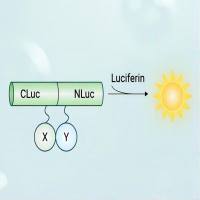Lipids are actively involved in many cellular processes. Their roles pivot toward determining membrane structure, compartment targeting, and membrane fusion but also regulation of cell signaling via their interactions with proteins and the production of second messengers. As they play a key role in cell signaling, the study of protein–protein interaction and protein conformation change in relationship with their interaction with lipids is of major importance. Until recently, the ability to detect in situ and in real time the dynamics of various biological events and signals without perturbing the cellular environment has been a real challenge. However, the emergence of fluorescence imaging of cells and tissues has allowed the dynamic aspects of the cell to be investigated in a more physiological context than the disassembled model systems employed in traditional biochemical analysis. This chapter highlights some of the many biological applications and uses of frequency- and time-domain fluorescence lifetime imaging microscopy (FLIM) applied to the detection of F�rster resonance energy transfer (FRET). The first part describes a FRET system, the second part discusses its study by FLIM, and the third part describes the application of these methods to a panel of biological questions such as (1) spatio-temporal interaction of protein kinase B (PKB) with 3-phosphoinositide dependent protein kinase-1 (PDK1), (2) PKB conformation change, (3) dynamics of PKB activation, (4) interaction of phosphatidylinositol transfer protein (PITP) and phospholipase D (PLD) with lipids.






